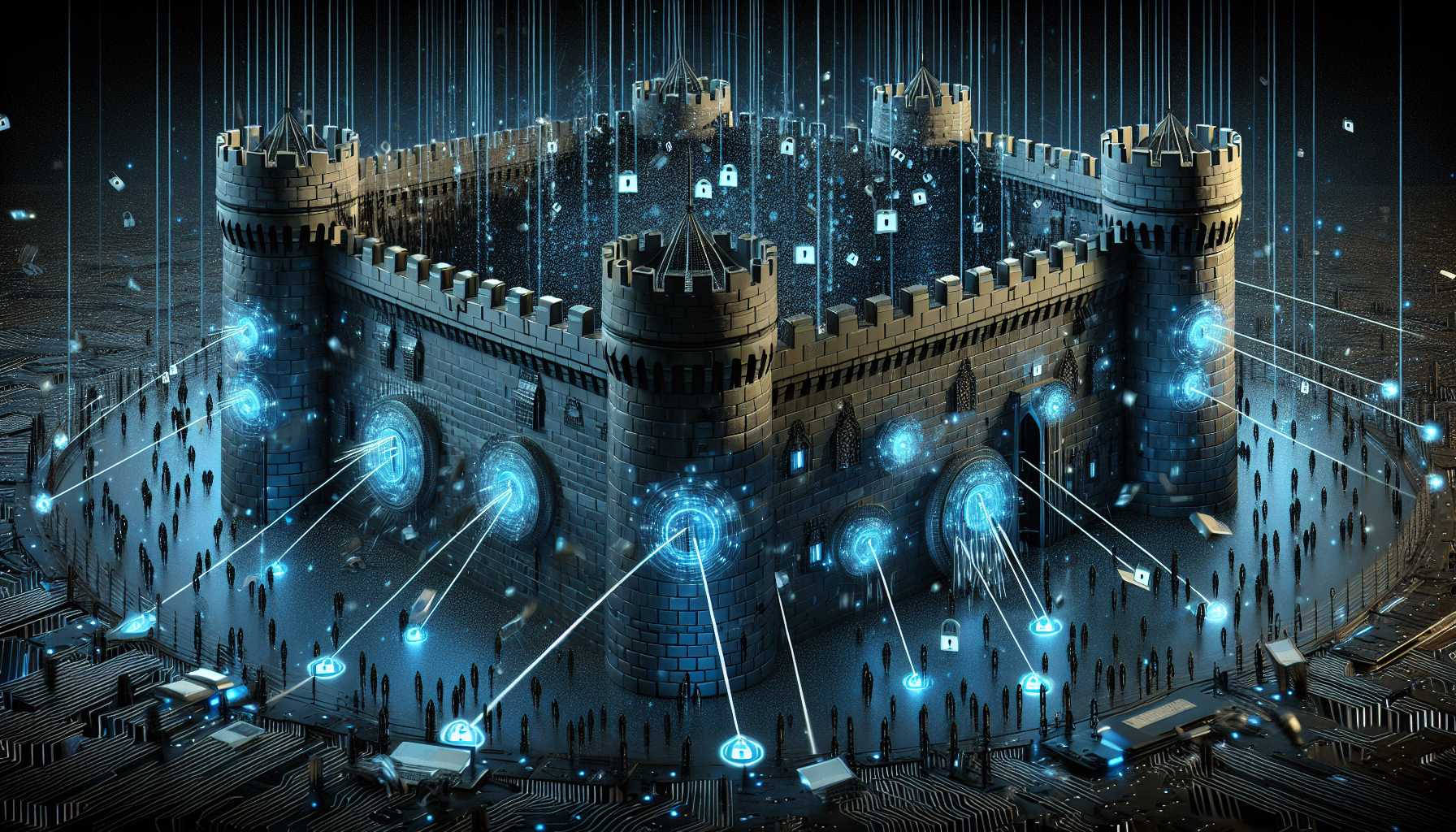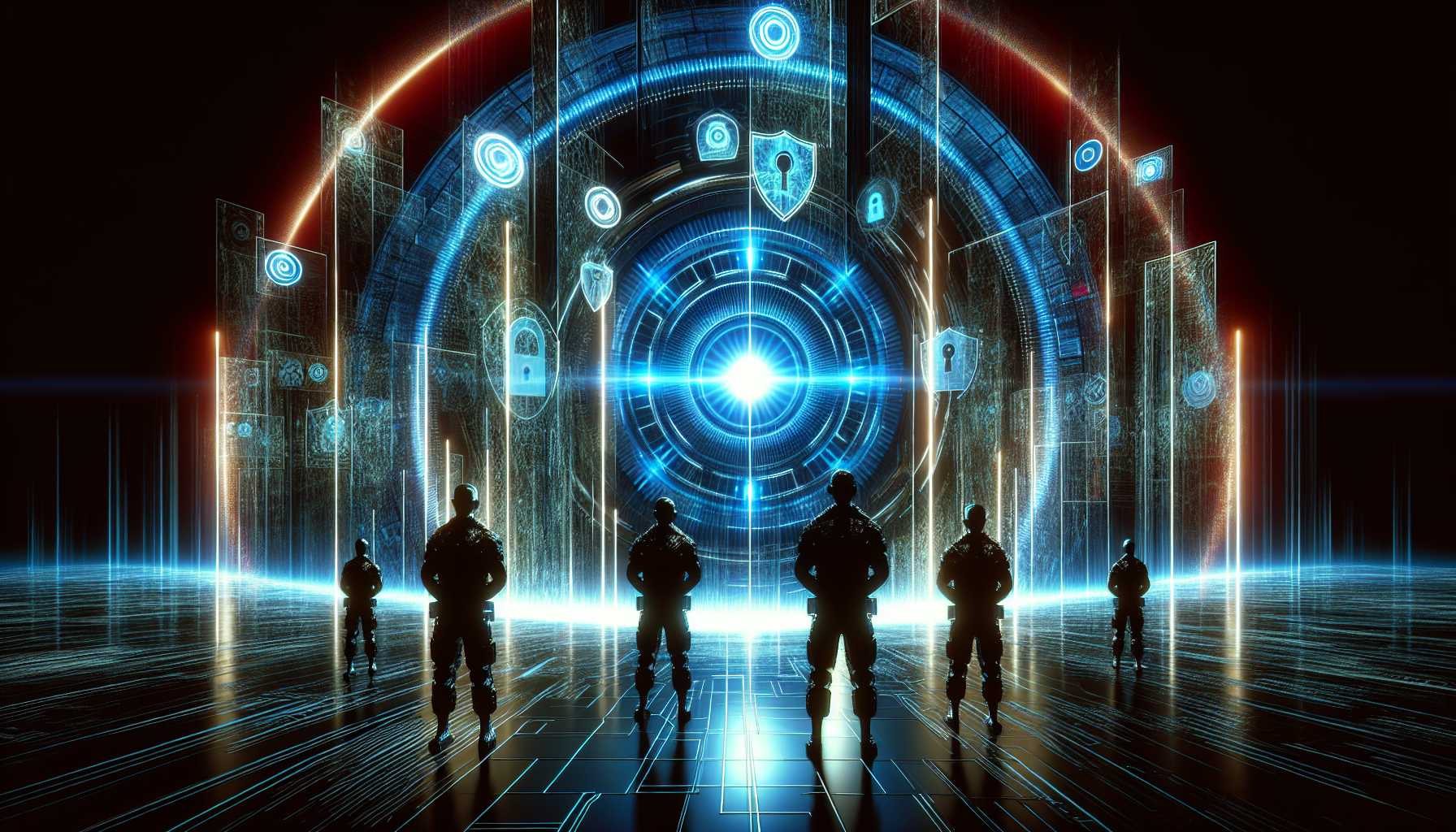‘
In the age of information warfare, tech titans have become fortresses under siege, guarding the vaults of data that shape our digital lives. Microsoft, a behemoth in the technology landscape, recently disclosed an incursion that reads like a page from a cyber-spy thriller. Let’s dive deep into this digital drama, where espionage meets enterprise, and every move in this cyber game requires strategy, skill, and a bit of luck.
The Return of Nobelium: A Cybersecurity Saga Continues
 Let’s set the stage with Nobelium, the cunning adversary with a flair for digital destruction. This notorious group of cyber saboteurs, also known as ‘Midnight Blizzard’ or the less frosty ‘APT29’, has risen from the shadows once again to challenge the defenses of none other than Microsoft. With a legacy that echoes through the halls of cyber history, Nobelium is the same ensemble behind the infamous SolarWinds attack, leaving their fingerprints on many a governmental gaffe. As one pours over the details of the tech titan’s latest tussle with Nobelium, it becomes clear that the attackers had a peculiar target in mind: knowledge of themselves. In a bizarre plot twist, the cyber assailants sifted through the electronic mail of Microsoft’s senior leadership, perhaps to peer into the mirror of Microsoft’s own intelligence gathering. It’s the epitome of high-stakes vanity—hackers hunting for reflections of their actions in the eyes of their pursuers.
Let’s set the stage with Nobelium, the cunning adversary with a flair for digital destruction. This notorious group of cyber saboteurs, also known as ‘Midnight Blizzard’ or the less frosty ‘APT29’, has risen from the shadows once again to challenge the defenses of none other than Microsoft. With a legacy that echoes through the halls of cyber history, Nobelium is the same ensemble behind the infamous SolarWinds attack, leaving their fingerprints on many a governmental gaffe. As one pours over the details of the tech titan’s latest tussle with Nobelium, it becomes clear that the attackers had a peculiar target in mind: knowledge of themselves. In a bizarre plot twist, the cyber assailants sifted through the electronic mail of Microsoft’s senior leadership, perhaps to peer into the mirror of Microsoft’s own intelligence gathering. It’s the epitome of high-stakes vanity—hackers hunting for reflections of their actions in the eyes of their pursuers.
The Anatomy of the Attack: Password Spraying and Covert Operations
 Now, let’s dissect the villain’s modus operandi, as intriguing as it is troubling. The masterminds at Nobelium employed a technique known as ‘password spray’, which, contrary to the name, isn’t a digital deodorant, but rather a brutish approach to break down the virtual doors. By bombarding systems with common passwords, these digital desperados hoped to hit the jackpot—and they did, just enough to leech onto a legacy non-production test account. With this newfound foothold, the perpetrators crawled through the digital ductwork, their eyes set on the prize—the email sanctum of Microsoft’s higher echelons. There, they harvested a treasure trove of communications, undoubtedly packed with insights into the security, legal, and technological strategies shaping the company. Yet, it’s worth noting that their presence went undetected until January 12th—ringing alarm bells about the spectral silence with which these cybernetic specters operate.
Now, let’s dissect the villain’s modus operandi, as intriguing as it is troubling. The masterminds at Nobelium employed a technique known as ‘password spray’, which, contrary to the name, isn’t a digital deodorant, but rather a brutish approach to break down the virtual doors. By bombarding systems with common passwords, these digital desperados hoped to hit the jackpot—and they did, just enough to leech onto a legacy non-production test account. With this newfound foothold, the perpetrators crawled through the digital ductwork, their eyes set on the prize—the email sanctum of Microsoft’s higher echelons. There, they harvested a treasure trove of communications, undoubtedly packed with insights into the security, legal, and technological strategies shaping the company. Yet, it’s worth noting that their presence went undetected until January 12th—ringing alarm bells about the spectral silence with which these cybernetic specters operate.
Safeguarding the Fortress: The Aftermath and Microsoft’s Vigilance
 Emerging from the fog of cyber conflict, Microsoft assures us that this was no Achilles’ heel in their software. Indeed, they have scoured their code and found it robust against this assault. But what sends shivers down the spine is the potential for disruption that these intrusions can cause—prompting the tech-giant to tighten its digital defenses and batten down the hatches of even its most archaic systems. One can’t help but ponder the poetic timing of this attack. It came mere days after Microsoft announced a grand plan to fortify its software security in the wake of vigorous virtual volleys against its Azure cloud services. The aftermath of this episode radiates a sense of urgency, as the company reaffirms its commitment to the digital defense of its legacy lines, even at the expense of upheaving established business processes. It’s a necessary evolution, a shedding of old skin for the sake of survival in the harsh climate of cyberspace.
Emerging from the fog of cyber conflict, Microsoft assures us that this was no Achilles’ heel in their software. Indeed, they have scoured their code and found it robust against this assault. But what sends shivers down the spine is the potential for disruption that these intrusions can cause—prompting the tech-giant to tighten its digital defenses and batten down the hatches of even its most archaic systems. One can’t help but ponder the poetic timing of this attack. It came mere days after Microsoft announced a grand plan to fortify its software security in the wake of vigorous virtual volleys against its Azure cloud services. The aftermath of this episode radiates a sense of urgency, as the company reaffirms its commitment to the digital defense of its legacy lines, even at the expense of upheaving established business processes. It’s a necessary evolution, a shedding of old skin for the sake of survival in the harsh climate of cyberspace.
The Paradox of Transparency: Corporate Candor in the Face of Cybersecurity Crises
 In a world teeming with cunning adversaries, Microsoft’s disclosure stands out as a beacon of transparency. It’s a strategic move that garners empathy while sternly reinforcing that no fortress is impregnable. Yet, one marvels at the paradoxical balance that companies like Microsoft must maintain—how to reassure the world of their security prowess without revealing too much to the prying eyes that linger in the dark corners of the internet. The tech giant’s narrative, laced with tech-noir undertones, offers a glimpse into the reality that behind every placid interface we interact with, a relentless battle rages on. A battle against entities like Nobelium that is as much about wits and cunning as it is about software and servers.
In a world teeming with cunning adversaries, Microsoft’s disclosure stands out as a beacon of transparency. It’s a strategic move that garners empathy while sternly reinforcing that no fortress is impregnable. Yet, one marvels at the paradoxical balance that companies like Microsoft must maintain—how to reassure the world of their security prowess without revealing too much to the prying eyes that linger in the dark corners of the internet. The tech giant’s narrative, laced with tech-noir undertones, offers a glimpse into the reality that behind every placid interface we interact with, a relentless battle rages on. A battle against entities like Nobelium that is as much about wits and cunning as it is about software and servers.
Final Reflections: Navigating the Digital Battleground
 As a seasoned tech investor and connoisseur of the technological tableau, this latest escapade serves as a stark reminder that the value of data extends beyond mere bytes and balance sheets. It’s about the power that knowledge wields and the lengths to which some will go to capture it—or in Nobelium’s case, to understand how they are perceived by one of the world’s most formidable tech arsenal, Microsoft. This episode is not an end but another opening gambit in the ongoing cyberspace chess game. We must remain vigilant, adaptable, and always one step ahead. For in the vast, interconnected networks of our modern world, the next move could come from any corner, at any time. So, let’s stay tuned to the pulsing signals of the tech world, ever-prepared for the next chapter in this never-ending saga of cyberspace skirmishes. Until next time, keep your passwords complex and your security standards higher than the digital walls of Troy. —
As a seasoned tech investor and connoisseur of the technological tableau, this latest escapade serves as a stark reminder that the value of data extends beyond mere bytes and balance sheets. It’s about the power that knowledge wields and the lengths to which some will go to capture it—or in Nobelium’s case, to understand how they are perceived by one of the world’s most formidable tech arsenal, Microsoft. This episode is not an end but another opening gambit in the ongoing cyberspace chess game. We must remain vigilant, adaptable, and always one step ahead. For in the vast, interconnected networks of our modern world, the next move could come from any corner, at any time. So, let’s stay tuned to the pulsing signals of the tech world, ever-prepared for the next chapter in this never-ending saga of cyberspace skirmishes. Until next time, keep your passwords complex and your security standards higher than the digital walls of Troy. —





